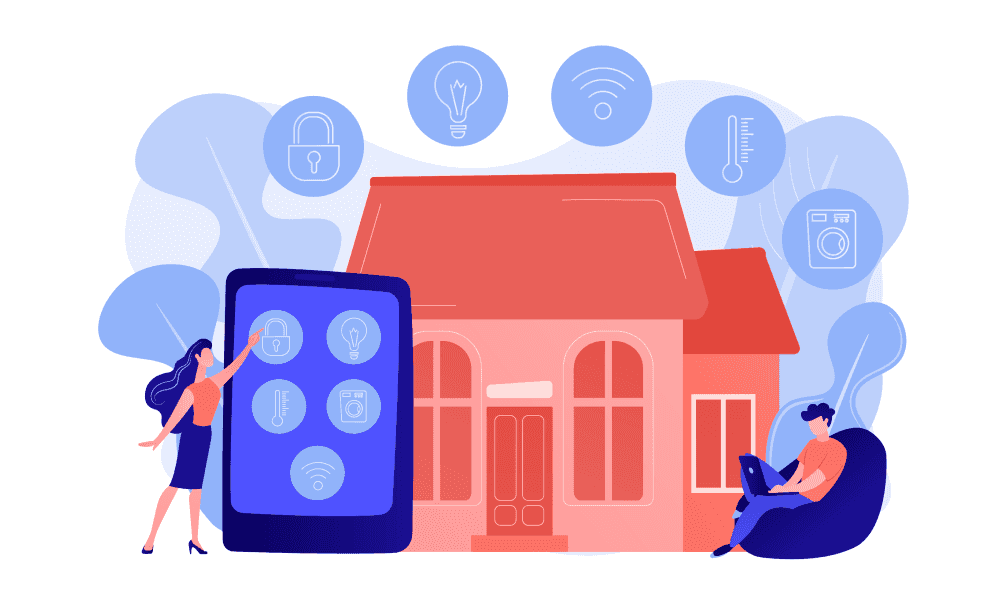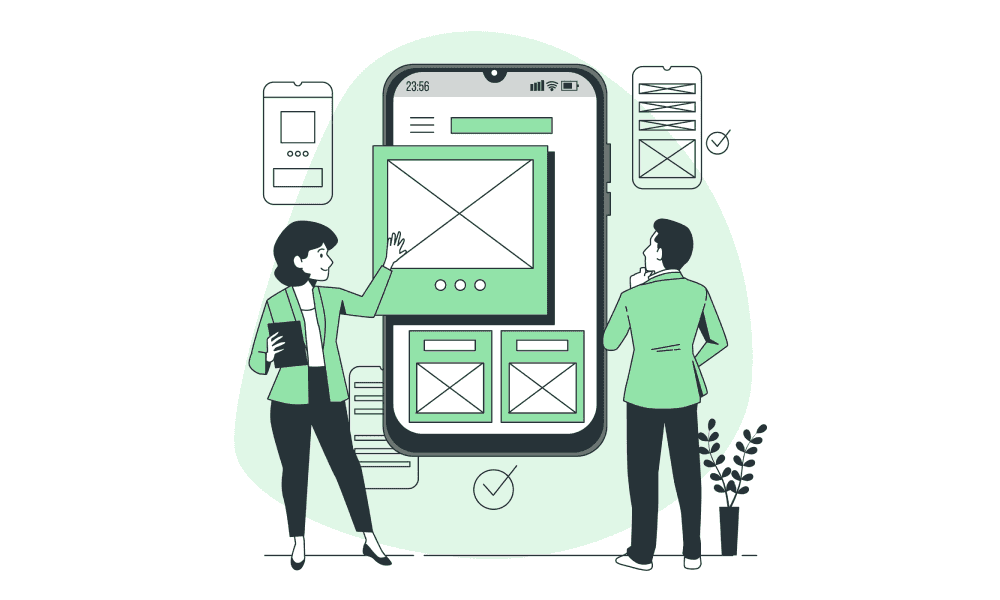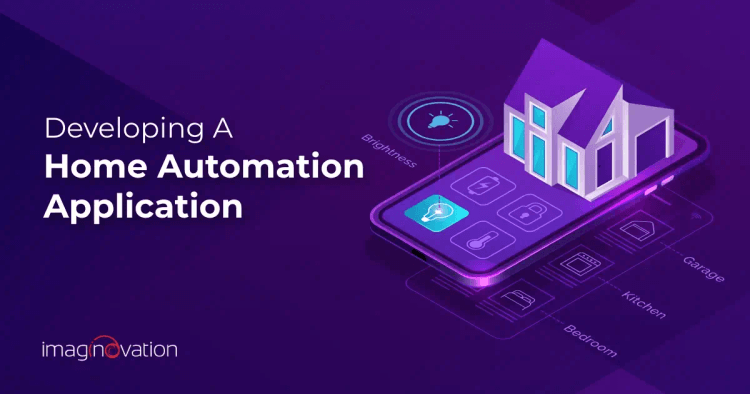In a world where chaos can sometimes feel like the norm, there is one place we all yearn to find comfort – our homes.
But could we make our homes smarter and more comfortable?
Smart homes are fast becoming the “in” thing. You can do almost anything you want to in your home: from controlling your lights and entertainment to checking on the security of your house, turning on and off air conditioners to locking doors automatically.
You name it, and you can do it!
Smart home automation apps can make your lives easier by automating all the menial tasks you perform on a daily basis.
Blending technology with convenience, these apps bring comfort to your fingertips.
If you are interested in building a Smart-Home Automation application, please read to the bottom!
This blog will take you through the basics of Smart Home solutions and help you in custom Smart Home App development.
Understanding the Basics of Smart Home Automation
Smart home automation is a concept aimed at living a smart life. It is based on the idea that almost everything in your house can be automated.
But what is a smart home?
A smart home is a setup where home appliances and devices can be controlled remotely from anywhere using an Internet connection and a mobile device.
What is smart home automation?
Home automation means automatically controlling electronic devices at home. These devices have to be connected to the Internet for remote control. Instead of manual control, the devices can trigger each other.
For example, you can schedule your lights to automatically turn off at bedtime or have your thermostat adjust the A/C before you return home.
This way, you build a convenient and comfortable living experience.
A smart home system has three main elements - a hub, sensors, and actuators. All of them are connected via a communication protocol (such as Wi-Fi, Bluetooth, or ZigBee) for data exchange and remote device control.
- The hub is like the brain of smart home tech, controlling communication between apps and devices. It has two parts: the back end and the client app, managing devices automatically.
- Sensors detect environmental factors like temperature or leaks and send info to the hub for precise decisions.
- Actuators, like smart TVs and smart thermostats, change states as per the hub's commands.
Home automation has three levels:
- Monitoring: You can check your devices remotely through an app. For example, you can view live footage from a smart security camera.
- Control: You can control the devices from afar. For example, you can use a security camera to see different areas of a room.
- Automation: You can set up devices to trigger actions automatically. For example, a smart siren can sound whenever a security camera detects motion.

Benefits of smart home automation
Here’s why smart home automation solutions are gaining popularity.
- Convenience - You can control and monitor various devices and electrical appliances remotely through the app. This makes everyday tasks more convenient and efficient.
- Energy Efficiency - Smart home automation allows you to optimize energy usage by turning off devices when not in use or using sensors to detect occupancy and adjust lighting accordingly.
- Cost Savings - By bringing down energy consumption and improving efficiency, you can save on utility bills over time.
- Added security - Smart home security features, such as smart cameras, alarms, and door locks, provide added security and protection. They allow you to check who enters your home and receive alerts when needed.
- Personalization - Smart home automation apps offer customizable settings and routines to cater to your preferences and lifestyle.
- Safety - Features like smoke detectors, water or gas leak sensors, and remote monitoring enhance safety for your family and property.
Key Features of a Smart Home Automation App
A Home Automation app has many features designed to elevate the comfort, convenience, and control of your living space.
Let's explore some of the essential features that make these apps a game-changer.
1. Device control
The home automation app allows you to remotely control various smart devices in your house, such as lights, thermostats, door locks, and other appliances. You can turn these devices on or off with a simple tap or voice command, adjust their settings, and set schedules.
2. Voice-based control
Many home automation apps integrate with popular voice assistants like Amazon Alexa, Google Assistant, or Apple Siri. This feature allows you to control smart devices using voice commands, adding an extra layer of convenience and hands-free control.
3. Notifications & alerts
A smart home solution needs to send automatic alerts and notifications to users. These notifications may include temperature and lighting changes and alerts for smoke or water leaks. They may also include alerts in case a door/window is left open. The users must be able to customize the notifications according to their preferences.
4. Customizable scenarios
Smart home automation apps can let you create customized scenes that trigger multiple devices simultaneously. For example, with a single tap, you can activate a "Movie Night" scene that dims the lights, closes the curtains, and starts your home theater system.
5. Schedule timers
You can schedule automatic operations, like turning lights on/off or changing settings, at specific times using timers.
6. User roles
User roles are especially crucial for large families or roommates sharing a space. This feature defines each user's access to automated functions, like limiting small children from unlocking doors while allowing them to control lights.
7. Smart room selection
With this feature, you can pick a specific area in your smart home, like the living room or bedroom. It lets you control all the devices in that space together without the need to handle them individually.
8. Personal analytics
Show insights about the daily routine and habits of users. Keep them informed about their energy consumption and appliance usage. Implement visual analytics and help the users track and analyze patterns such as TV-watching habits or food storage in the refrigerator.
Building a Smart Home Automation App
Building a successful and user-friendly smart home automation application involves several essential steps. Let's take a look at them:
Step 1: Conduct market research and competitor analysis

Conduct thorough market research and competitor analysis to understand your target audience's needs, preferences, and pain points.
This knowledge allows you to develop an app that addresses the user’s specific requirements, thus increasing the chances of its success.
By conducting research, you can determine if your app has a demand. Understanding the market demand helps you avoid investing time and money in building a smart home application that may not find enough users.
Step 2: Decide what kind of home automation solution is needed
When you decide to build a smart home automation solution, you have two options:
- Option 1: Create a single-purpose solution for controlling one product, like a smart speaker or a smart lock. It's quicker and cheaper to develop but not easy to market. Most people have multiple smart devices, and managing separate apps for each device can be inconvenient.
- Option 2: Build a multi-purpose solution that integrates many devices into one system. This way, users can control devices from different manufacturers, giving them more freedom and a better experience. The development process can be more complex, but the potential benefits are significant.
Step 3: List out the core features of your app
Carefully identify and determine the essential functions defining your app's purpose. You prioritize the most crucial features to ensure your smart home solution remains user-centric.
Use the knowledge gained from market research and determine what features are already available in existing smart home apps.
Avoid adding unnecessary complexities and focus only on what truly matters. This way, you increase the chances of building a successful smart home solution that stands out.
Step 4: Good UI/UX Design

Smart home app development requires carefully designing the user interface (UI) and user experience (UX).
An attractive and simple interface is crucial for engaging and satisfying users.
You can also plan the app's structure, navigation flow, and element placement by creating wireframes, mockups, or prototypes.
Step 5: Opt for the right data storage
Building a home automation system means collecting lots of data from all connected devices. You have two options for data storage: cloud or local.
Cloud storage allows users to access data from anywhere with an internet connection. It is convenient for data recovery and scalability.
On the other hand, local storage keeps data on FTP servers or built-in memory, but it's less popular due to higher power consumption and costly hardware maintenance.
Step 6: Build an apt security policy
All smart home automation applications are at risk of cyber theft, making a robust security strategy essential for app developers. Make sure your users follow the following tips to ensure the safety of smart applications:
- Encrypt data.
- Encourage users to use a secure Wi-Fi network and strong and unique passwords for all devices.
- Ensure regular updates for smart devices.
- Integrate security software.
Step 7: Define the tech stack and build the app’s backend & front-end
The technology stack for a smart home app involves both frontend and backend development components. They include
- Programming Languages.
- Frontend & web frameworks.
- User Interface (UI) Libraries.
- API Integration.
- User Authentication.
- Database Management Systems.
- Cloud Services.
- Real-Time Communications.
Additionally, a smart home app may involve integrating with third-party APIs and platforms for device manufacturers.
Choose technologies supporting scalability, security, and seamless user experiences to create a successful and competitive smart home app.
Step 8: Testing

Your software’s reliability and performance rely on its testing and troubleshooting.
Thorough testing helps find and fix bugs and inconsistencies.
Moreover, when you do compatibility testing, it ensures a consistent user experience across platforms and devices. Functional testing, on the other hand, verifies that all functionalities work as intended.
Step 9: Provide ongoing support and maintenance
Ongoing app support and maintenance are crucial for success. Frequent updates address bugs, security, and compatibility. Great user experience requires excellent customer service and prompt issue resolution. Regular updates keep the app up-to-date with technological advancements and market trends in the smart home ecosystem.
Challenges and Considerations in Building a Smart Home Automation App
Building a smart home application comes with its share of challenges and considerations.
Here are some of the key ones:
1. Interoperability
Smart home apps need to communicate with many different devices and systems using a variety of communication protocols. However, making these apps connect and interoperate seamlessly with multiple platforms and technologies isn’t easy.
2. Scalability
With time, more devices may be added to a smart home system. Thus, the complexity of managing and coordinating them also increases. Each new device introduces additional communication, processing, and storage requirements, making it harder to handle a large number of devices seamlessly.
3. Security & privacy
Smart homes deal with user data and control over physical devices, thus making security a top priority. Protecting user privacy, providing robust security, preventing unauthorized access, and securing communication between the app and smart devices can be critical considerations.
4. Performance optimization
Managing a smart home automation solution's performance is tough, especially with multiple types of devices and data streams. Significant performance concerns include improving response times, using resources efficiently, and preparing for future scalability issues.
5. Multiple devices compatibility
The smart home automation market offers many types of smart home devices. Ensuring compatibility and smooth integration with all these devices can be challenging.
6. Data backup & recovery
Data backup and recovery are critical to building a smart home automation app. Regular backups of user settings, preferences, and configurations ensure that data can be restored in case of unforeseen issues or data loss.
Build A Smart Home Application With Imaginovation
The future of home automation looks promising.
As smart homes and workplaces become more popular, Imaginovation can help you overcome challenges and build innovative, secure, and user-friendly IoT solutions.
Get started with Imaginovation, your trusted technology partner, for custom smart home app development.
We have expertise in building top-notch smart home apps. We understand your business needs and can create a tailored home automation solution.
Let's collaborate and create the future of smart living!
Imaginovation is an award-winning web and mobile app development company with vast experience crafting remarkable digital success stories for diverse companies.
Ready to build an app, but not sure where to start?
We've got you covered. Click the button below to get started.





